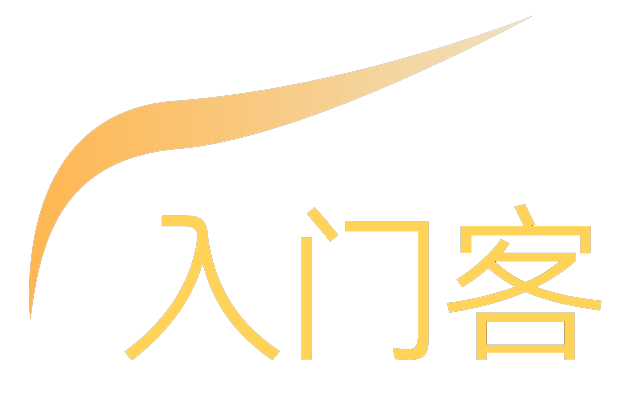Android 仿淘宝选中商品不同尺寸的按钮组
文章转载自 http://blog.csdn.net/qq_30552993/article/details/52304744
今天刚好有个同学他想做一个仿淘宝中的选中商品不同尺寸,比如衣服有L、M、XL等等的款式。这时候我们就需要一个button组来进行了,当时这个时候里面的尺寸可能有很多,那怎么办呢?这里我们就肯定要做个自适应的按钮组了,要不然弄出来也没用。废话不多说,先上个效果图:
是不是感觉起来效果蛮不错的呢?


现在我们就来说说里面的一些原理把!说句实话,我也不是大神,这个也是查询网上的一些原理问题弄出来的,希望大家不要嫌弃哦!么么哒!
一、原理:
1.其实这里我们用到的是一个ViewGroup控件组,把这些按钮加进去就有这种效果了!不过这里要继承ViewGroup(命名为:GoodsViewGroup)重写里面的一些方法。
2.主要的方法有:
GoodsViewGroup按钮组的控件大小
[java] view plain copy
- protected void onMeasure(int widthMeasureSpec, int heightMeasureSpec)
[java] view plain copy
- protected void onLayout(boolean changed, int l, int t, int r, int b)
这两个方法的具体使用大家可以网上查阅资料,这里就不多说了!
二、代码:
[java] view plain copy
- /**
- * Created by ShaoLin on 2016/8/22.
- * 这里是类似淘宝中商品尺寸按钮组(这里做了支持button,textview)
- */
- public class GoodsViewGroup<X extends TextView> extends ViewGroup {
- public static final String BTN_MODE = "BTNMODE"; //按钮模式
- public static final String TEV_MODE = "TEVMODE"; //文本模式
- private static final String TAG = "IViewGroup";
- private final int HorInterval = 10; //水平间隔
- private final int VerInterval = 10; //垂直间隔
- private int viewWidth; //控件的宽度
- private int viewHeight; //控件的高度
- private ArrayList<String> mTexts = new ArrayList<>();
- private Context mContext;
- private int textModePadding = 15;
- //正常样式
- private float itemTextSize = 18;
- private int itemBGResNor = R.drawable.goods_item_btn_normal;
- private int itemTextColorNor = Color.parseColor("#000000");
- //选中的样式
- private int itemBGResPre = R.drawable.goods_item_btn_selected;
- private int itemTextColorPre = Color.parseColor("#ffffff");
- public GoodsViewGroup(Context context) {
- this(context, null);
- }
- public GoodsViewGroup(Context context, AttributeSet attrs) {
- super(context, attrs);
- mContext = context;
- }
- /**
- * 计算控件的大小
- */
- @Override
- protected void onMeasure(int widthMeasureSpec, int heightMeasureSpec) {
- super.onMeasure(widthMeasureSpec, heightMeasureSpec);
- viewWidth = measureWidth(widthMeasureSpec);
- viewHeight = measureHeight(heightMeasureSpec);
- Log.e(TAG, "onMeasure:" + viewWidth + ":" + viewHeight);
- // 计算自定义的ViewGroup中所有子控件的大小
- measureChildren(widthMeasureSpec, heightMeasureSpec);
- // 设置自定义的控件MyViewGroup的大小
- setMeasuredDimension(viewWidth, getViewHeight());
- }
- private int measureWidth(int pWidthMeasureSpec) {
- int result = 0;
- int widthMode = MeasureSpec.getMode(pWidthMeasureSpec);
- int widthSize = MeasureSpec.getSize(pWidthMeasureSpec);
- switch (widthMode) {
- /**
- * mode共有三种情况,取值分别为MeasureSpec.UNSPECIFIED, MeasureSpec.EXACTLY,
- * MeasureSpec.AT_MOST。
- *
- *
- * MeasureSpec.EXACTLY是精确尺寸,
- * 当我们将控件的layout_width或layout_height指定为具体数值时如andorid
- * :layout_width="50dip",或者为FILL_PARENT是,都是控件大小已经确定的情况,都是精确尺寸。
- *
- *
- * MeasureSpec.AT_MOST是最大尺寸,
- * 当控件的layout_width或layout_height指定为WRAP_CONTENT时
- * ,控件大小一般随着控件的子空间或内容进行变化,此时控件尺寸只要不超过父控件允许的最大尺寸即可
- * 。因此,此时的mode是AT_MOST,size给出了父控件允许的最大尺寸。
- *
- *
- * MeasureSpec.UNSPECIFIED是未指定尺寸,这种情况不多,一般都是父控件是AdapterView,
- * 通过measure方法传入的模式。
- */
- case MeasureSpec.AT_MOST:
- case MeasureSpec.EXACTLY:
- result = widthSize;
- break;
- }
- return result;
- }
- private int measureHeight(int pHeightMeasureSpec) {
- int result = 0;
- int heightMode = MeasureSpec.getMode(pHeightMeasureSpec);
- int heightSize = MeasureSpec.getSize(pHeightMeasureSpec);
- switch (heightMode) {
- case MeasureSpec.UNSPECIFIED:
- result = getSuggestedMinimumHeight();
- break;
- case MeasureSpec.AT_MOST:
- case MeasureSpec.EXACTLY:
- result = heightSize;
- break;
- }
- return result;
- }
- /**
- * 覆写onLayout,其目的是为了指定视图的显示位置,方法执行的前后顺序是在onMeasure之后,因为视图肯定是只有知道大小的情况下,
- * 才能确定怎么摆放
- */
- @Override
- protected void onLayout(boolean changed, int l, int t, int r, int b) {
- // 遍历所有子视图
- int posLeft = HorInterval;
- int posTop = VerInterval;
- int posRight;
- int posBottom;
- for (int i = 0; i < getChildCount(); i++) {
- View childView = getChildAt(i);
- // 获取在onMeasure中计算的视图尺寸
- int measureHeight = childView.getMeasuredHeight();
- int measuredWidth = childView.getMeasuredWidth();
- if (posLeft + getNextHorLastPos(i) > viewWidth) {
- posLeft = HorInterval;
- posTop += (measureHeight + VerInterval);
- }
- posRight = posLeft + measuredWidth;
- posBottom = posTop + measureHeight;
- childView.layout(posLeft, posTop, posRight, posBottom);
- posLeft += (measuredWidth + HorInterval);
- }
- }
- //获取控件的自适应高度
- private int getViewHeight() {
- int viewwidth = HorInterval;
- int viewheight = VerInterval;
- if (getChildCount() > 0) {
- viewheight = getChildAt(0).getMeasuredHeight() + VerInterval;
- }
- for (int i = 0; i < getChildCount(); i++) {
- View childView = getChildAt(i);
- // 获取在onMeasure中计算的视图尺寸
- int measureHeight = childView.getMeasuredHeight();
- int measuredWidth = childView.getMeasuredWidth();
- if (viewwidth + getNextHorLastPos(i) > viewWidth) {
- viewwidth = HorInterval;
- viewheight += (measureHeight + VerInterval);
- } else {
- viewwidth += (measuredWidth + HorInterval);
- }
- }
- return viewheight;
- }
- private int getNextHorLastPos(int i) {
- return getChildAt(i).getMeasuredWidth() + HorInterval;
- }
- private OnGroupItemClickListener onGroupItemClickListener;
- public void setGroupClickListener(OnGroupItemClickListener listener) {
- onGroupItemClickListener = listener;
- for (int i = 0; i < getChildCount(); i++) {
- final X childView = (X) getChildAt(i);
- final int itemPos = i;
声明:该文观点仅代表作者本人,入门客AI创业平台信息发布平台仅提供信息存储空间服务,如有疑问请联系rumenke@qq.com。
- 上一篇:没有了
- 下一篇:没有了


